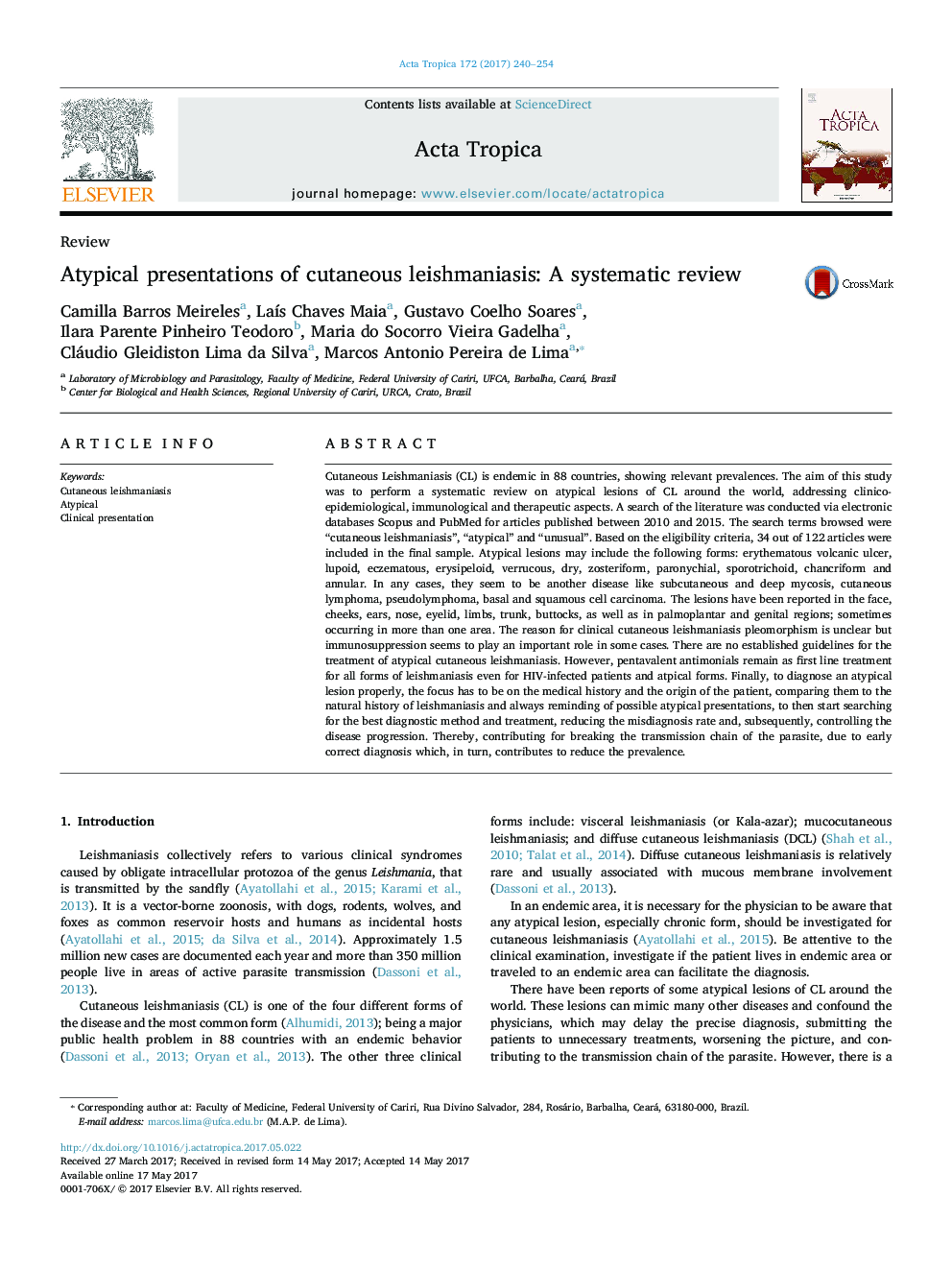| کد مقاله | کد نشریه | سال انتشار | مقاله انگلیسی | نسخه تمام متن |
|---|---|---|---|---|
| 5671109 | 1592752 | 2017 | 15 صفحه PDF | دانلود رایگان |
- An overview of the clinical aspects of atypical lesions of cutaneous leishmaniasis.
- These lesions demand a thorough investigation focused on the differential diagnosis.
- The role of the patient's immunological status in the development of atypical lesions.
Cutaneous Leishmaniasis (CL) is endemic in 88 countries, showing relevant prevalences. The aim of this study was to perform a systematic review on atypical lesions of CL around the world, addressing clinico-epidemiological, immunological and therapeutic aspects. A search of the literature was conducted via electronic databases Scopus and PubMed for articles published between 2010 and 2015. The search terms browsed were “cutaneous leishmaniasis”, “atypical” and “unusual”. Based on the eligibility criteria, 34 out of 122 articles were included in the final sample. Atypical lesions may include the following forms: erythematous volcanic ulcer, lupoid, eczematous, erysipeloid, verrucous, dry, zosteriform, paronychial, sporotrichoid, chancriform and annular. In any cases, they seem to be another disease like subcutaneous and deep mycosis, cutaneous lymphoma, pseudolymphoma, basal and squamous cell carcinoma. The lesions have been reported in the face, cheeks, ears, nose, eyelid, limbs, trunk, buttocks, as well as in palmoplantar and genital regions; sometimes occurring in more than one area. The reason for clinical cutaneous leishmaniasis pleomorphism is unclear but immunosuppression seems to play an important role in some cases. There are no established guidelines for the treatment of atypical cutaneous leishmaniasis. However, pentavalent antimonials remain as first line treatment for all forms of leishmaniasis even for HIV-infected patients and atpical forms. Finally, to diagnose an atypical lesion properly, the focus has to be on the medical history and the origin of the patient, comparing them to the natural history of leishmaniasis and always reminding of possible atypical presentations, to then start searching for the best diagnostic method and treatment, reducing the misdiagnosis rate and, subsequently, controlling the disease progression. Thereby, contributing for breaking the transmission chain of the parasite, due to early correct diagnosis which, in turn, contributes to reduce the prevalence.
Journal: Acta Tropica - Volume 172, August 2017, Pages 240-254
